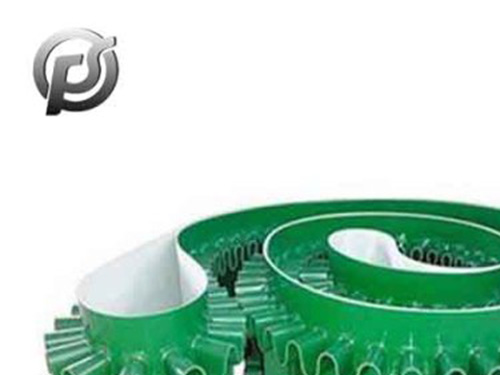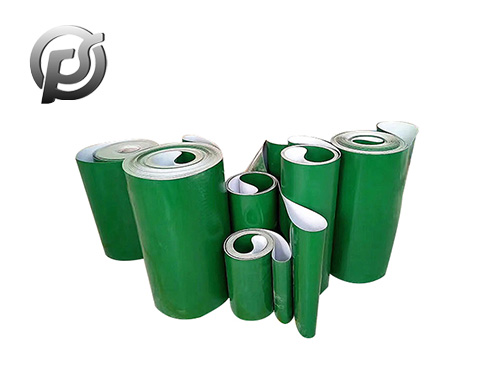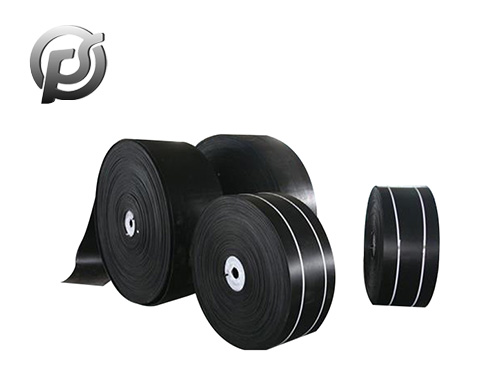The
belt conveyor is a continuous action conveying machinery with the belt as the traction mechanism and the bearing mechanism. It has large transportation capacity, small working resistance, low power consumption and simple maintenance. It has been widely used in the ground and underground transportation of coal mines. The roller is the main part of the belt conveyor, the service life of the roller seriously affects the normal operation and production of the conveyor, so it is quite necessary to master certain knowledge of the roller.
In the conveyor, the roller can not only transfer the traction force, but also change the direction of the belt. According to the manufacturing process, it is divided into welding drum and casting welding drum, and according to the function, it is divided into driving drum and reversing drum. The high power (≥360kw) driving drum adopts the casting welding drum, and the rest can be welded drum. The drum consists of a shaft, a drum and two joints. The joints are castings, and the drum is rolled by steel plate. In the work, the shaft is connected with the connection plate, the connection plate is welded with the disc, and the driving force is transferred to the drum shaft, which drives the overall movement of the drum, thus driving the tape to run. Its transmission theory is based on the principle of friction transmission, that is, by means of the friction between the transmission drum and the conveyor belt, the driving device is organically connected with the conveyor belt, so as to complete the energy transfer task between the two and ensure the reliable operation of the conveyor.
The pressure of the belt on the roller is large, and it is easy to crack the roller in the long term. The cracks are often irregular from the welding of one side web to the welding of the other side web along the axial direction. Main causes of rupture: First, the belt tension force is large, because the tension force is large, the traction force is large, the conveyor in order to improve the transmission capacity, always hope to increase the tension force to achieve the purpose, which is bound to increase the pressure of the drum, in addition, the speed increases, the torque on the drum will also increase, which will make the drum and its parts bending deformation, coupled with the poor underground environment, and then cause the drum fracturing; Second, the strength of the roller is not enough, the selected steel plate material is not good or the thickness of the steel plate is not enough, it will also cause rupture; Third, the steel plate welding process is not good, the welding quality is not high, it will also cause rupture. Because the structure of the drum can not be separated from welding, welding stress will be generated in the operation process, such as bad treatment, under the pressure soon make cracks in the welding.
The solutions are as follows:
(1) Select high quality materials to improve manufacturing quality and ensure the strength of the drum.
(2) Increase the thickness of the steel plate of the reel, and evenly arrange several reinforcing bars along the axial direction on the inside of the reel. This can be according to the force of the drum, calculate the belt in the drum everywhere tension, design layout reinforcement, to improve the strength of the drum.
(3) Improve welding process and ensure welding quality. The welding between the plate and the cylinder is the key process of making the cylinder. According to the design requirements, the weld quality must meet JB1152-81 Class II standard.
(4) Strengthen maintenance, improve the service life of the drum, such as the workplace to keep clean, ensure heat dissipation conditions; Do not allow the tape to slip along the roller, find loose immediately tensioned; Ensure that cleaning and installation work normally, the surface of the roller is not allowed to adhere to debris.
(5) Regular maintenance to ensure reliable operation.
(6) The roller surface is coated with high strength wear-resistant materials such as polyurethane as the liner of the roller to increase the friction between the roller and the tape, reduce wear, prevent breakage, and improve the service life of the roller.
 Stone Conveyor Belt: Enhancing Efficiency and Productivity in Material Handling
Stone Conveyor Belt: Enhancing Efficiency and Productivity in Material Handling
 Optimizing Operations with PE Conveyor Belts: Durability, Efficiency, and Versatility
Optimizing Operations with PE Conveyor Belts: Durability, Efficiency, and Versatility
 Exploring the Efficiency and Versatility of Light Conveyor Belts
Exploring the Efficiency and Versatility of Light Conveyor Belts